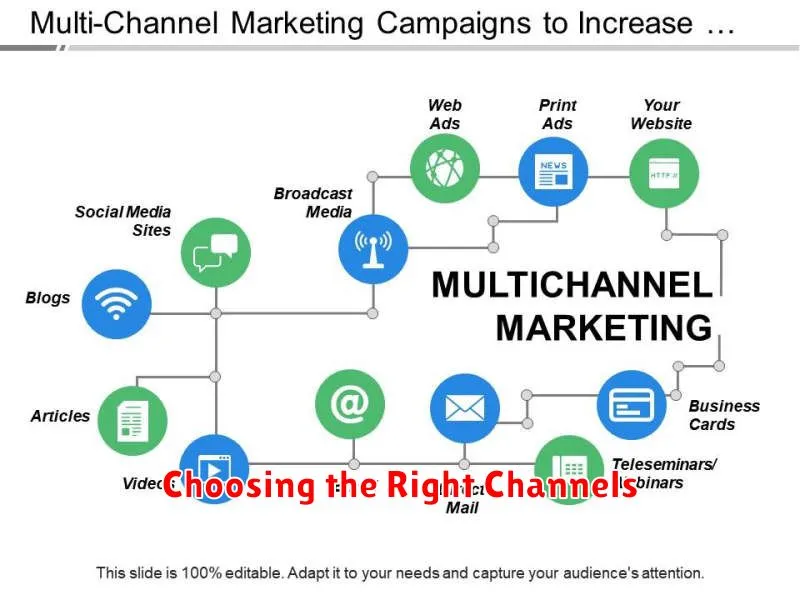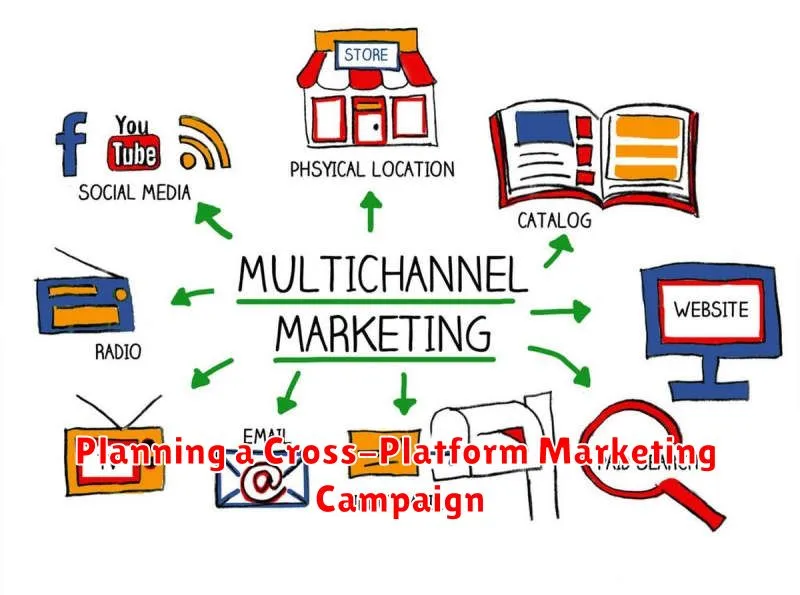In today’s interconnected world, reaching your target audience effectively requires a strategic cross-platform marketing campaign. A well-executed cross-platform marketing strategy leverages the strengths of various marketing channels, creating a synergistic approach that maximizes brand visibility and drives conversions. This cohesive approach integrates platforms like social media, email marketing, search engine optimization (SEO), paid advertising, and content marketing to deliver a consistent brand message and experience across all touchpoints. By understanding the nuances of each platform and tailoring your messaging accordingly, you can engage your audience more effectively, build stronger brand loyalty, and ultimately achieve your marketing objectives.
This article will delve into the essential steps for planning and executing a successful cross-platform marketing campaign. We’ll explore how to identify your target audience, select the right marketing channels, craft compelling and consistent messaging, track and analyze campaign performance, and optimize for maximum impact. Whether you’re a seasoned marketer or just starting out, this guide will equip you with the knowledge and insights you need to create a powerful cross-platform marketing strategy that delivers measurable results and drives business growth. Learn how to effectively allocate your budget, measure your return on investment (ROI), and adapt to the ever-evolving digital landscape to stay ahead of the competition and achieve your marketing goals.
Benefits of Cross-Platform Strategy
Leveraging a cross-platform marketing strategy offers several key advantages for businesses aiming to expand their reach and maximize impact. A primary benefit is increased brand visibility. By engaging with your target audience across multiple platforms, you significantly increase the chances of your message being seen and remembered. This wider exposure strengthens brand recognition and fosters a sense of familiarity among potential customers.
Improved audience engagement is another crucial benefit. Different platforms attract different segments of your audience, allowing you to tailor your messaging to resonate with each specific group. This personalized approach fosters deeper connections and encourages greater interaction with your brand.
Furthermore, a cross-platform strategy allows for diversified marketing investments. By spreading your budget and efforts across multiple channels, you reduce reliance on any single platform and mitigate the risk of algorithm changes or other platform-specific disruptions impacting your overall marketing performance.
Finally, cross-platform campaigns offer valuable data and insights. Tracking performance across different channels provides a holistic view of customer behavior and preferences. This data allows you to refine your strategies, optimize spending, and ultimately drive better results from your marketing efforts.
Choosing the Right Channels

Selecting the right channels is crucial for cross-platform success. Target audience is the primary consideration. Where do they spend their time online? Different demographics favor different platforms. For instance, a younger audience might be heavily engaged on TikTok and Instagram, while a professional audience might be more active on LinkedIn and Twitter.
Campaign goals also play a vital role. Are you focused on brand awareness, lead generation, or driving sales? Certain platforms are better suited for specific objectives. Instagram excels at visual storytelling for brand building, while LinkedIn is often more effective for B2B lead generation.
Resource availability is another important factor. Managing multiple platforms effectively requires time, budget, and expertise. Start with a manageable number of channels and expand as your resources allow. Focus on quality over quantity.
Channel-specific features should also inform your choices. Consider the unique strengths of each platform. Short-form video might be ideal for TikTok, while in-depth articles might perform better on LinkedIn. Leverage the platform’s strengths to maximize your impact.
Coordinating Messaging and Timing
A successful cross-platform marketing campaign hinges on cohesive messaging and strategic timing. Consistency is key to reinforcing your brand identity and campaign objectives across different channels. While the format and tone may be adapted to suit each platform, the core message should remain unified.
Timing plays a crucial role in maximizing campaign impact. Consider the specific audience of each platform and their typical usage patterns. A staggered approach, where content is released on different platforms at optimal times, can extend campaign reach and engagement. For instance, a product announcement might be teased on social media before being fully detailed on your website and in email newsletters.
Developing a content calendar can be invaluable in coordinating messaging and timing across multiple platforms. This calendar should outline the type of content, the target platform, the publishing date and time, and the intended goal for each piece of content. This organized approach ensures that your campaign unfolds smoothly and effectively.
Real-time adjustments are also crucial. Monitoring campaign performance and audience engagement across each platform allows you to identify what’s resonating and what’s not. This data can inform timely adjustments to your messaging or timing to optimize campaign effectiveness.
Tracking Channel-Specific KPIs
Tracking key performance indicators (KPIs) is crucial for evaluating the success of your cross-platform marketing campaign. Since each platform serves a different purpose and attracts a unique audience, you must track metrics specific to each channel to understand its individual performance.
For social media, relevant KPIs might include engagement rate, reach, follower growth, and click-through rates. Email marketing KPIs often focus on open rates, click-through rates, conversion rates, and unsubscribe rates. If utilizing paid advertising, metrics like cost per click (CPC), cost per acquisition (CPA), and return on ad spend (ROAS) become paramount.
Tracking channel-specific KPIs provides insights into what’s working and what’s not. This data allows you to optimize your strategy by reallocating resources towards high-performing channels and refining your approach on underperforming ones. By analyzing these metrics, you can gain a granular understanding of audience behavior on each platform and tailor your messaging and content accordingly.
Utilizing analytics dashboards specific to each platform can streamline the tracking process. Consolidated marketing dashboards can also be helpful for comparing cross-platform performance and identifying overall trends.
Repurposing Content Effectively
Repurposing content maximizes your investment in creating high-quality materials. It’s not simply copying and pasting; it’s strategically reformatting and reworking content to suit different platforms and audiences.
For instance, a webinar recording can be repurposed into several shorter video clips for social media. Key takeaways from the webinar can then be used to create blog posts or infographics. Quotes from the webinar can be designed into visually appealing social media graphics.
A comprehensive e-book can be broken down into a series of email newsletters or individual blog posts focusing on specific chapters. This allows you to reach a wider audience and extend the lifespan of your original content.
Data and statistics from your original content can be visualized into charts and graphs for social media or presentations. This helps present complex information in an easy-to-understand format, attracting a broader audience.
Repurposing isn’t about being lazy; it’s about being efficient. By strategically repurposing existing content, you can reach a wider audience, reinforce your message across multiple platforms, and maximize your return on investment.
Tools to Manage Campaigns
Managing a cross-platform marketing campaign can be complex. Leveraging the right tools is essential for streamlining workflows and maximizing impact. Several categories of tools can assist in this process.
Social Media Management Platforms: These tools allow for scheduling posts, tracking engagement, and analyzing performance across various social media channels. Features like unified inboxes and keyword monitoring simplify communication and brand mentions tracking.
Marketing Automation Software: These platforms often include email marketing, lead nurturing, and campaign tracking capabilities. They can automate repetitive tasks, personalize messaging, and provide valuable insights into campaign effectiveness.
Analytics Dashboards: Consolidating data from different platforms into a single dashboard provides a holistic view of campaign performance. These dashboards offer key metrics such as website traffic, conversion rates, and return on investment (ROI) which are crucial for making data-driven decisions and optimizing campaigns.
Project Management Tools: Collaboration is key in any marketing campaign. Project management software facilitates team communication, task assignment, and progress tracking. This ensures that everyone stays aligned and deadlines are met.

